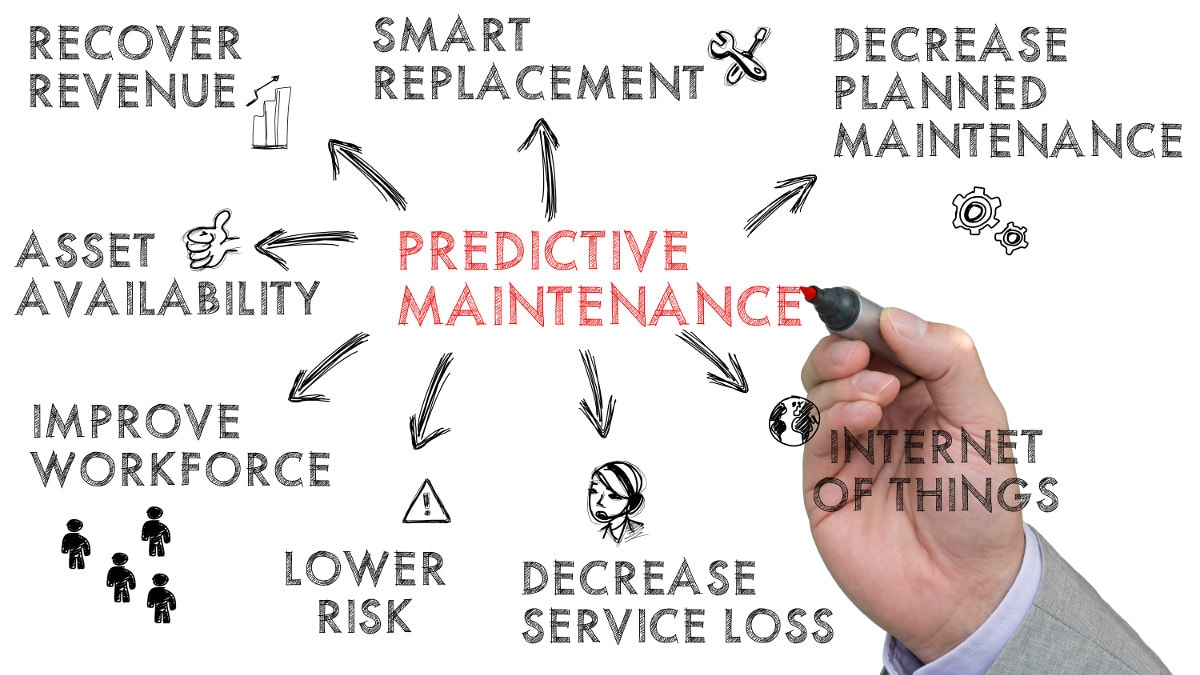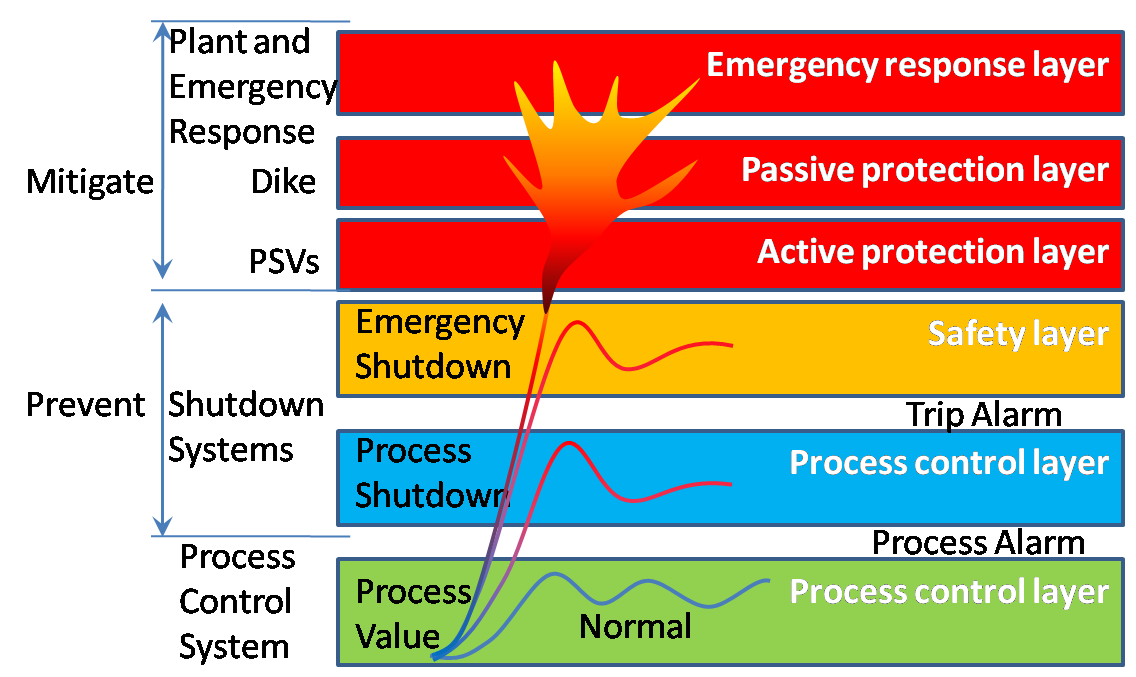Preventive Maintenance and Predictive Maintenance Procedures & Practices is Fundamental Requirement of Quality Production Processes
Preventive Maintenance (PM) and Predictive Maintenance (PDM) are a series of tasks and company policies that, if followed meticulously, improve and upkeep the health of machines and operating systems and keep business profits as high as possible. This is achieved by adhering to three general guidelines.
- Maintain the production machines and plant utility supply systems equipment close to original condition and have all machines and equipment ready to start up and run with no unplanned shutdowns.
- Maintain the production machines and plant utility systems equipment in best possible operating condition for the purpose of producing quality manufactured products while machines are in operation.
- Complete all PM and PDM task on a regularly scheduled basis without exceeding the” point of Diminishing Returns on Investment” for the labor. tools and materials required to perform the tasks.
The difference between preventive and predictive Maintenance.


- PM tasks are completed when machines are shut down.
- PDM activities are generally carried out as the machines are running in their normal production modes.
As in all systems and processes of work –there are five factors to answer before any actual work begins: Who, What, When, Where and Why.
Why is already answered in above three guidelines.
The” Who”: relates to several different types of members of the PM and PDM team.
- The person writing the details of what needs to be done must have a deep understanding of the many aspects of machines, Aging, wear, component material fatigue patterns, effects of dirt and other contaminants, heat/cold, humidity, effect of chemical contact, vibration, lubrication practices, measurement processes, maximum safety methods, work efficiency standards, work scheduling, people skills, and plant processes are all factors that must be carefully considered.
- The mechanics and electricians that perform the PM and PDM work must of be high caliber and posses the skill levels of a maintenance department. On average, 85% to 90% of PM and PDM tasks call for machine inspection work and only 10% to 15% lubrication work. The people performing these tasks must fully understand machine and machine component operations before they can effectively inspection for specific problems and negative operative operating trends.
- The maintenance engineer solely responsible for the people performing the PM and PDM tasks must understand the work to be accomplished and set the performance standards, goals and expectations. They must be able to monitor the quality and quantity of work completed as well as measure the results. Also, they be competent to make changes and improvements to the Individual PM tasks as part of an overall continuous improvement effort. These changes are dictated by the results of measurements and changes in the plant processes and equipment. Finally, the maintenance engineer should be able to complete failure analyses. Determining why and how a component failed is the first step in determining how to prevent subsequent failure.
- The plant in charge must view the PM and PDM work system as required constant work practices that are just as important to the production process as any other function. This will require a minimal planned downtime of equipment to fulfill all PM and PDM work.
- Machine operators (production employees) are a significant part of PM systems. They are the first to see changes in the machines they operate. Active participation of all machine operators in various machine set ups, inspections, and in some cases lubrications of machinery. The extent of participation depends upon the overall skill levels of workforce and complexity of the equipment as well as types of processes involved. Quality policy of plant management determine the training of work forces and setting its expectations.
-
Contractors can also be included in some PM task, especially the PDM work involved. Many contractors can supply cost effective services in some of the more specialized inspections and tests required. For example, vibration and ultrasonic analyzing is highly specialized aspect of PDM and requires extensive training and high-test equipment purchase and upkeep costs can be contracted out. Contractors can also be hired for Heating Ventilation and Air Conditioning (HVAC) units to do the scheduled pm tasks. Other Contractor may be hired for Air compressor and air dryer PM tasks.
The” WHAT” and” Where “of PM
Typically, detailed PM and PDM procedures are written for all production equipment to ensure that all machine components are inspected and lubed for maximum sustained operation. This process must be applied for plant utilities including air compressors, air dryers, boilers, electrical substations, motor control centers, and wastewater treatment. Plant safety systems: Fire alarms and suppression systems, emergency lighting, overhead cranes and hoists, and ceiling mounted items such as lights, fans, and piping must also be included. Many plants also choose to include Pm work on HVAC system, roof leak detection, air emission, forklifts and other systems.
The detail and extent of PM and PDM tasks varies with the type of equipment involved. The written PM procedure is the document that tells the workers what needs to be done. This document needs to contain all of the tasks that will provide the most thorough inspections and lubrications of machines in planned down time. Generally, the PM inspections of most machines are one of two types. The first is for any thing that moves or cause some other machine part to move. This needs to be inspected for damage, wear, loose and missing fasteners, etc., and proper lubrications performed. The second is the inspection of static, non-moving machine components such as wiring, plumbing lines and hoses, structural support members etc., for damage, cracked welds, loose and missing fasteners, etc.
Maintenance engineer writing the procedure must be experienced and understand in all phases of static and dynamic machine principals and actual machine degradation analysis.
“When”
It depends upon several factors like design, function and duration of time the machines runs between regular shutdowns and/or how much time is available for PM. Another factor is the environment in which machine runs. S it humid and damp, or extremely hot and dry? Do the machines receive shock loads or run with moderate to high vibration level? Is the machine subject to chemical spillage or leakage, ultraviolet light, etc.? Good operating and cleaning practices, or the lack of them, have significant impact on PM scheduling. In addition, planned shutdowns for plant expansions, machine rebuilds, inventories, vacations, etc., also dictate when some of the more involved PM work can be accomplished.
Cleaning, lubrication, inspection and tightening. “CLIT”
Typically, there are items to be inspected and lubricated daily. This comes under daily routine checks and regular maintenance.
PREDICTIVE MAINTENANCE:
Most of the information covered under preventive maintenance procedures that are completed on machines while shutdown. There are other tasks that are considered under Predictive Maintenance (PDM) practices. One of these is oil sampling and analysis which is usually carried out when machine is shut down. Oil samples are taken and sent out for laboratories that specializing in analyzing industrial oils. this gives us valuable information about lubricating ability of oil; its stability; contents of water, wear metal particles, and dirt; among other aspect.
Another extremely important PDM procedure is Vibration analysis.
Using a portable vibration analyzer, readings taken from many points on machines. These readings are direct and extremely accurate measurements of the vibration amount and frequencies produced by the moving parts of the machine. these readings used to tell if any parts need replacing or adjustment, and exactly what internal parts are causing problems. Bad bearings, excessively worn gears, and poor coupling alignment can cause excessive vibration, weakened mounting fasteners and many other mechanical problems. Vibration analysis also can tell us if pumps have loose impellers, air cavitation, faulty valves, or mounting problems. In addition, it reveals trending information. When vibration readings are taken, they provide a base number to use as a gauge to determine if and how much internal machine changes are taking place between inspections. This is the absolute best tool for detecting the correct health of machines and for trending the internal activities inside motors, gearboxes, pumps, large fans, compressors, and many other machine components. There is no better way to detect machine problems before they can cause an unplanned shutdown due to a component failure. What’s more, the fact that vibration analysis is done while the machines are running in their production modes allows the testing to be done at any time and is especially important for any plants that runs 24 hours per day, seven days per week.

Proper star-up protocols.
Start-up operations; change over and set-up; and shutdown procedures should be carefully planned and consistently implemented on all machines.
- Procedures lists for unplanned shutdowns. Record what is to be done when unplanned power outage occurs and what to do before the power comes back on.
- Emergency management plans for floods, fire, etc.
- Machine component rebuild programs to insure quality and consistency.
- Machine cleaning practices and procedures.
- Available informational equipment manuals for maintenance personnel.
- Solid troubleshooting skills by all maintenance personnel.
The above information provides an outline of a comprehensive PM and PDM system.
There are many aspects of maintenance and other plant functions that influence number of machine breakdowns and the length of downtime. Some of these considerations are not normally associated with the term PM, but nonetheless contribute to equipment failure. Therefore, they should be considered as part of comprehensive approach to Preventive &predictive Maintenance.
While there are many variables to take into consideration, if properly designed, instituted, and operated, the PM and PDM system will help to ensure dependable and predictable performances from all serviced equipment, machines, and related process.

